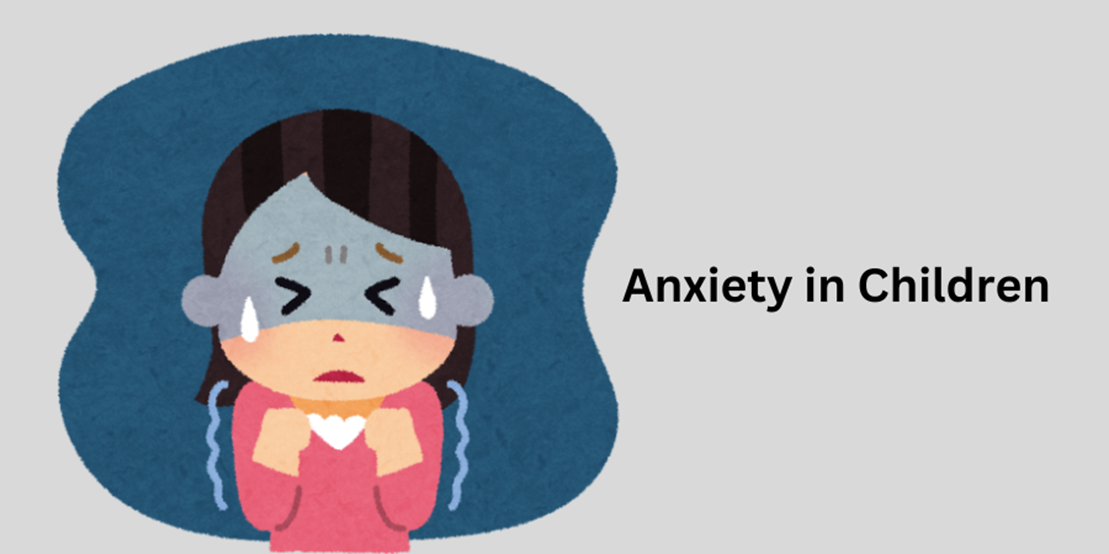
What Are The Anxiety Symptoms in Children?

Anxiety and fear are considered a part of development in the early days of childhood. Children often feel anxious or fearful of going to new places, starting school, or meeting strangers. Children feel a strong sense of fearfulness when away from parents or caregivers even if they are in a safe environment. Although fear and worry can be normal in children, however extreme and intense feelings can be problematic. If it intensifies that it starts interfering with the daily life of the children and parents feel the difference in their behavior that is time they need to consult mental health professionals. Understanding symptoms of anxiety in children is important for parents to reach out for professional help.
Symptoms of Anxiety in children:
- Irritability -
- Excessive fear -
- Trouble sleeping -
- Aggression -
- Anxious state followed by excessive sweat -
- Trouble Breathing
Children with anxiety often become easily frustrated or upset. They might have frequent mood swings, exhibit impatience, or have a short temper, reacting strongly to minor inconveniences or changes in routine.
Anxiety can cause children to have intense, often irrational fears. These fears might center around specific situations (like going to school or being away from parents), or they might be more generalized, causing the child to worry excessively about various aspects of their life.
Sleep disturbances are common in anxious children. They might have difficulty falling asleep, wake up frequently during the night, or have nightmares. This lack of restful sleep can further exacerbate their anxiety and affect their daily functioning.
In some cases, anxiety can manifest as aggressive behavior. Children might lash out verbally or physically as a way to cope with their overwhelming emotions. This aggression can be directed at peers, family members, or even themselves.
Anxiety often triggers a physical response in the body, known as the fight-or-flight response. This can lead to excessive sweating, especially during moments of heightened anxiety. Children might suddenly become sweaty, especially on their palms, forehead, or underarms, when they feel anxious.
Children experiencing anxiety might feel like they can't catch their breath or that their chest is tight. This can lead to rapid, shallow breathing or hyperventilation, which can be frightening for both the child and those around them. It's a physical manifestation of their anxious state and can further increase their sense of panic.
There are different types of anxiety with different symptoms present in children. Parents need to understand the various types of anxiety in children as it can help the parents to understand the triggers and help the mental healthcare provider to plan intervention accordingly.
Types of anxiety in children:
Generalized Anxiety Disorder:
It is a form of anxiety in children and adolescents where they have persistent, excessive fear and unrealistic worry about not a specific thing or object. A child can worry about his class performance, sports events, related family members, etc. Children with GAD struggle with concentration, learning, and participating in things around them due to constant worry and fear. Some children may constantly try to seek reassurance from others while others may have self-doubts, lack of self-confidence, or maybe overly concerned about standing on other people’s expectations.
Panic Disorder:
Children with Panic disorder have excessive fear or worry along with physical symptoms like an increased heartbeat (Heart Palpitation), and difficulty in breathing (dyspnea) and sometimes they may experience dizziness too. Children who experience panic disorder may spend most of their time worrying about the panic attacks.
Social Anxiety:
As the name suggests this is a kind of anxiety where children have intense fear or anxiety of social situations. Children may avoid public speaking. It can impact the child’s social and academic life. A child has difficulty interacting with other children in school.
Specific Phobias:
The nature of basic fear is to protect humans from danger. Fear is common in younger children. They outgrow it as they age. For some children and adolescents fear can become severe. If fear is excessive and intense it can be phobia. Children who have phobias have an intense and irrational fear of specific objects or situations. Phobias are different from fear as it doesn’t go with reassurance. Children can have a phobia related to sharp objects, animals, elevators, medical or dental procedures, height, etc.
Obsessive Compulsive Disorder:
Children with OCD have intrusive and repeated thoughts, to feel better or get rid of these disturbing thoughts they may indulge in the compulsive behavior. Compulsive behavior helps them get over the anxiety they experience. Children with OCD experience difficulty in carrying out daily routines as the obsession and compulsive behavior significantly interfere with their daily functioning and cause distress and embarrassment.
Separation Anxiety Disorder:
It is very common in young children. They fear strangers and start crying when encounter them or feel the absence of their caregivers. They may outgrow it as they grow older. But if it does not then it requires intervention of medical health professionals or mental health experts. As it makes it difficult for children to leave their caregivers and socialize. It can affect the other developmental areas adversely.
Causes of Anxiety Disorders in Children:
Family history can contribute to anxiety in children. Environmental factors such as modeling from people around them can also lead to anxiety in young children. Some children may develop it due to circumstances like a change of place, school, serious illness, any kind of abuse or neglect, etc. Children with neurodevelopmental disorders are more likely to have problems with anxiety.
Treatment of Anxiety symptoms in children:
Treatment of anxiety symptoms in children can be either counseling, pharmacological treatment, or a combination of both. In Counselling a mental health professional uses different therapies to help children overcome anxiety. Cognitive behavioural therapy is one of the most proven psychological therapy which helps children with anxiety symptoms. A trained therapist encourages children to restructure their thoughts. They can be encouraged to change their behaviour the way they do. Medicines are only given in cases where the anxiety is high or severe in children. It is given by a medical professional who specializes in children and adolescents. In severe anxiety cases also taking medicines alone does not help. It has to be in combination with the psychotherapy.
Parents need to notice any kind of changes a child is experiencing and report it to the medical professional before it worsens. Early interventions can help a child live a normal and anxiety-free life.
image credit : freepik

How Psychotherapy Helps in Late-Life Depression And Anxiety: A Path to Healing, Hope, And Healthy Aging
How Social Isolation Impacts Geriatric Mental Health? How to Reverse It?

